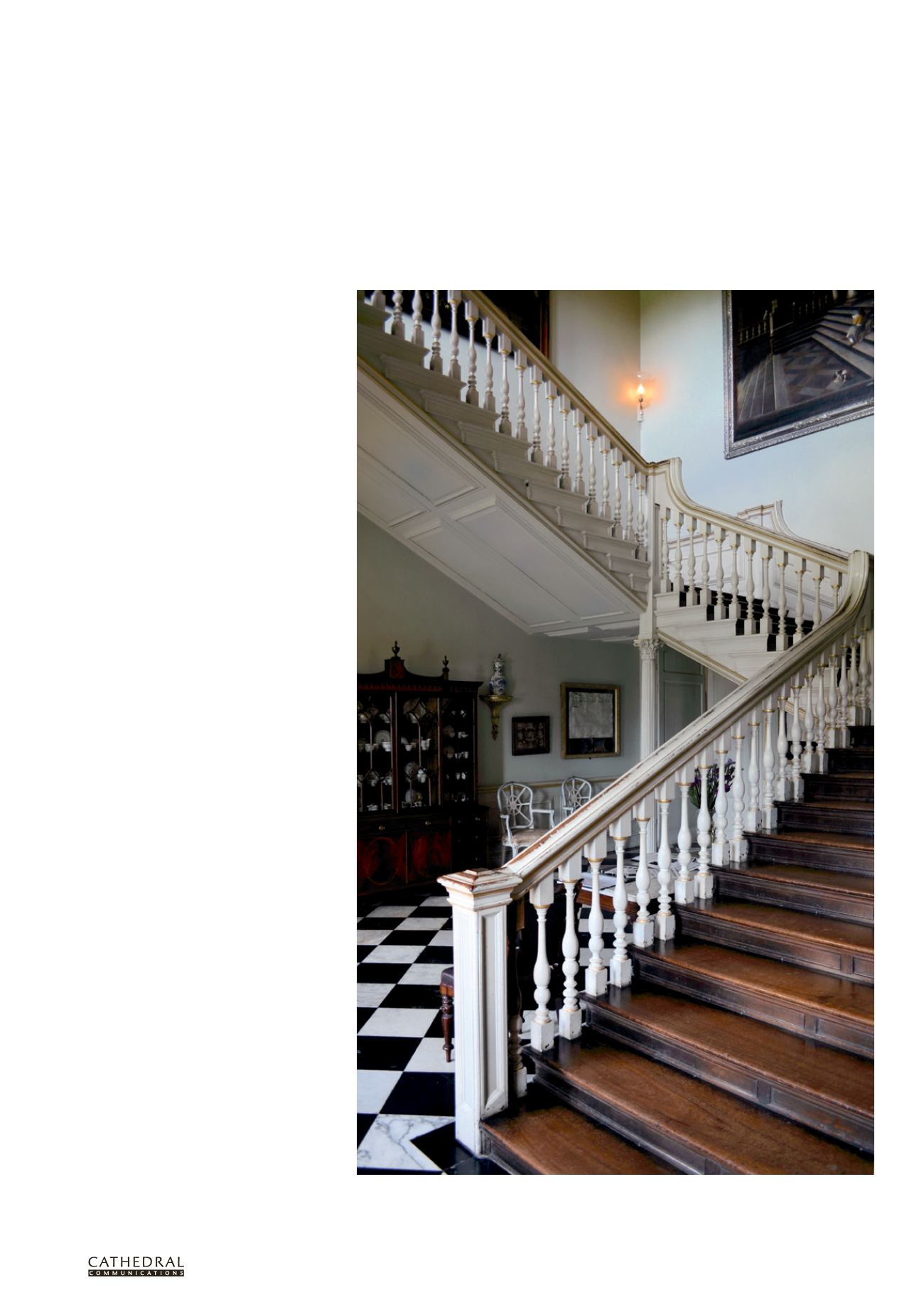
T W E N T Y F I R S T E D I T I O N
T H E B U I L D I N G C O N S E R VAT I O N D I R E C T O R Y 2 0 1 4
1 3
1
PROFESSIONAL SERVICES
HISTORIC TIMBER STAIRCASES
MANAGEMENT, CONSERVATION and REPAIR
AMY WILLIAMSON
A
S WELL
as its obvious functionality, a
staircase can be an important part of
what makes a historic building special.
What should be done when a historic staircase
starts to deteriorate or poses an unacceptable
level of risk to those who use it? How can
the staircase be kept in use without causing
harm to those aspects of it which merit
conservation?
While it might not be possible to provide
a definitive guide to the conservation of any
component of architectural significance in
the space of a short article, the subject of
timber staircases provides a useful vehicle
for exploring why one element of a building
might be significant in heritage terms. It also
affords an opportunity to explore some of the
problems that arise through the continual use
of a building over a long period of time and
the basic approach to identifying the most
appropriate conservation measures.
SIGNIFICANCE
In deciding the best course of action for the
management, repair or alteration of any form
of historic fabric, it is vital that those involved
in the decision-making process understand its
heritage significance so that its integrity can
be maintained.
The latest approach to assessing heritage
significance, as set out in both English
Heritage’s and Cadw’s conservation principles
requires that we consider four main areas of
heritage value: evidential, historical, aesthetic
and communal. Not all of these values will
necessarily be applicable to the component in
question, yet they serve as a useful framework
for considering what might make something
worthy of conservation.
While assessment of significance has to
be considered on a case-by-case basis, it is
possible to highlight some key areas in which
significance might frequently be identified
when thinking about staircases.
Given its function, a staircase often
forms an integral element in the plan form of
a structure, and as building plan forms have
developed over time, the positioning and
design of staircases has evolved accordingly.
As such, the location and form of a staircase
can provide key evidence in dating a building
and can help us to disentangle the sequence
of development of a complicated structure. It
can illustrate an aspect of a typical or unusual
historic plan form, and since its position
will have shaped circulation patterns, can
contribute to understanding how people lived
or worked in a particular building. In the same
way, variations of style between individual
The Walnut staircase at Dyrham Park, Gloucestershire, which was constructed in the early 18th century
(Photo: Jonathan Taylor, by courtesy of the National Trust)


